So, your customer support team just switched over from Gmail to Zendesk.
And while you’re happy about the upgrade, you can’t seem to find the tools you’re looking for within its UI. There’s a pretty steep learning curve that’s resulted in a lot of wasted time. You’ve also realized you’re paying a premium for features and integrations you’ll never use.
I’ve been there before – many times.
Gmail or Outlook wasn’t effective, so the business switched over to popular, expensive software. They believed that the shiniest tool was the best. And that it would automatically improve service, without any time investment required.
The reality is that there’s no one perfect tool for every team. So how does your business choose the best customer service software for its needs? It starts with knowing what the options are.
The Trouble With Using the Wrong Platforms To Manage Customer Service
When using Gmail and Outlook for support, my previous employer faced problems with emails that were frequently marked as spam. Customers would reach out and never get a response.
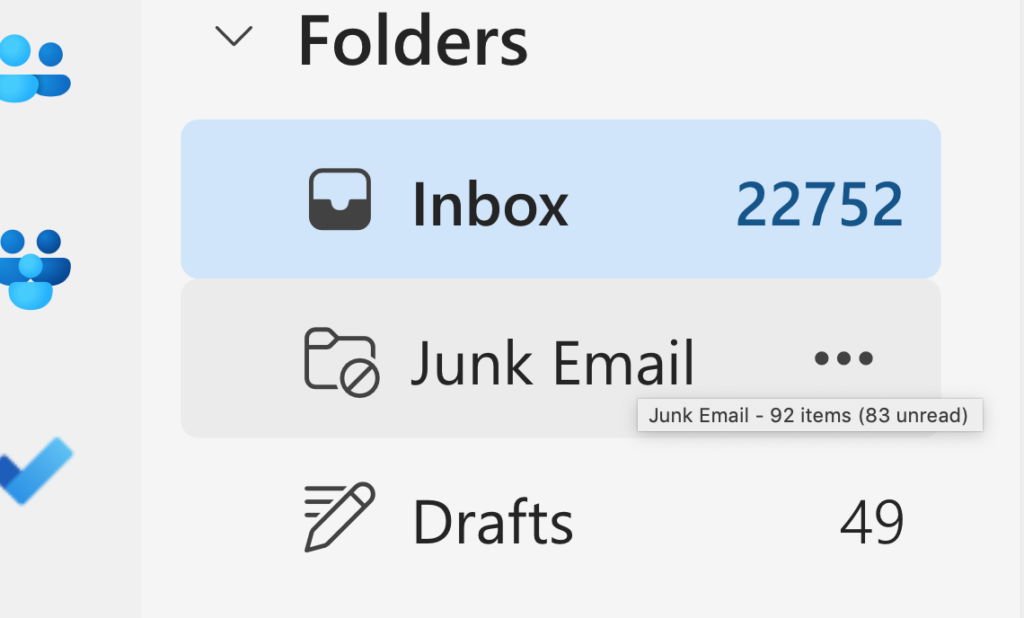
There was also a distinct lack of collaborative features. No collision detection or internal notes, and no way to properly monitor unresolved emails (other than marking them with a ‘star’ or adding them to our ‘tasks’, which was helpful but insufficient).
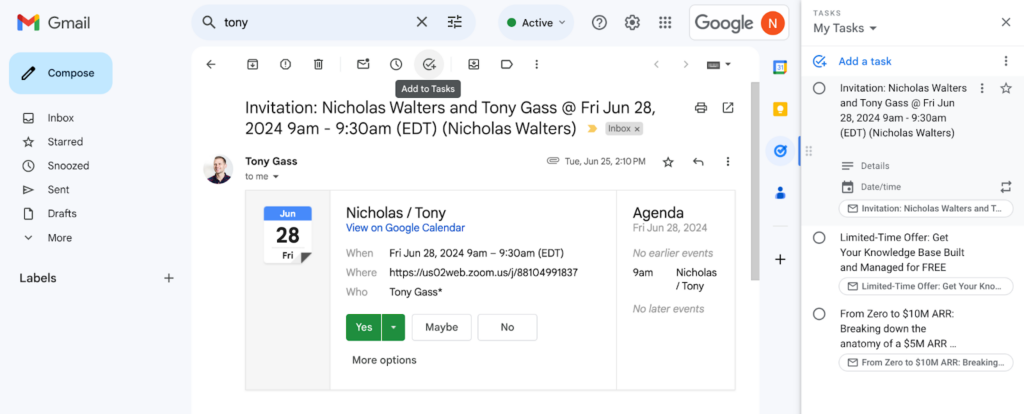
It wasn’t a genuine shared inbox. While traditional email platforms offer business tiers these days, they’re still primarily built for individual use.
Conversely, many popular tools like Zendesk required too much effort to learn, and too much time investment to set up properly. These tools focused on advanced customization, rather than accessibility and streamlining.
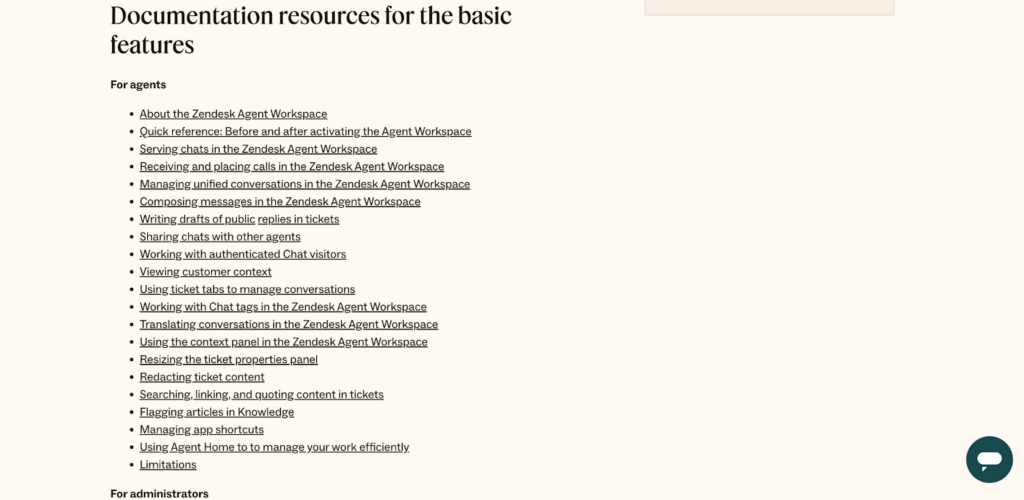
I can appreciate thorough online resources for setting up software. But it shouldn’t require hours of reading just to get support software up and running.
Comparing Common Tools for Customer Service: What’s the Difference?
Effective customer service software helps you resolve issues. It doesn’t add new problems to your plate.
When you’re on the hunt for the right tool, here are the main categories you’ll encounter:
- A help desk acts as a centralized platform or “shared inbox” your business can use to provide customer service. It helps you track, organize, and manage customer interactions across different channels. When a help desk receives a request, whether via email, live chat, phone, or some other method, it creates a service ticket that can be organized and responded to in one place.
- A service desk or ticketing system tends to be focused on IT. While terms like “help desk”, “ticketing system”, and “service desk” are all used interchangeably, most often the latter is used internally to support technical infrastructure. In other words, it’s how your employees communicate and track technical issues between departments.
- CRM (Customer Relationship Management) software is used primarily for lead management. It helps to store essential customer information, such as purchase history, account level, and interaction history.
- Live chat is most often a feature offered in a larger software package, although it can be purchased individually. It enables real-time support via a widget, which can be posted to your website or embedded in-app. Customers are prompted to communicate via a pop-up window or text box, and conversations are directed to live agents or fielded by chatbots.
Ideally, you’ll want a tool that bundles all the channels and features you need. Having to switch back and forth between platforms constantly isn’t efficient.
At the same time, you’ll want to avoid software that includes a lot of functionality you won’t use. That functionality hikes up the price, especially as your team grows. Plus, it slows down your day-to-day work when the UI is cluttered with unnecessary bells and whistles.
What Software Features Does Your Team Need?
So what you need to know is what kinds of software features your business can benefit from.
What types of customer service tasks are you most likely to face? And what functionality is most useful for handling those tasks?
Let’s look at some common problems you might be dealing with, and what you’ll need to address them.
“Our Team Is Overwhelmed with High Email Volume, and Needs To Automate Repetitive Tasks”
If your business is receiving a lot of emails, you’ll need a support inbox equipped with advanced organizational features. While platforms like Gmail and Outlook allow for very basic ‘rules’ that sort emails into folders and subfolders, those sorting features have limitations.
Help desks are better for automating repetitive tasks such as ticket routing and escalation, freeing up your team to focus on more serious issues. This increases overall efficiency, and reduces response times.
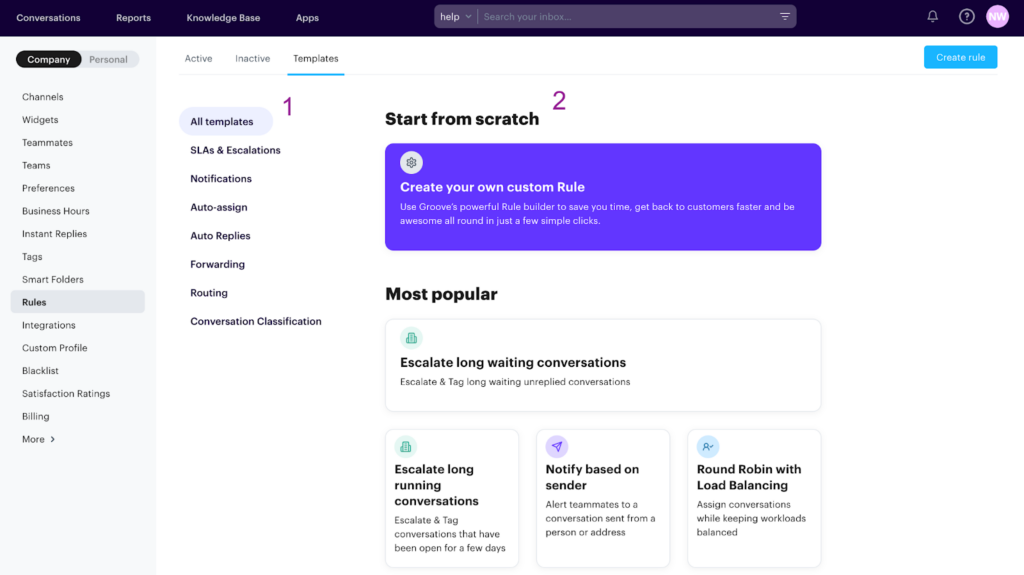
Automation is often leveraged to apply tags or labels to certain types of emails before they go into designated folders. For example, all customer emails related to a specific technical glitch can be gathered together and responded to in bulk.
Beyond that, you might want more options for what happens to a ticket the moment it hits your inbox. For example, you could automatically assign tickets to agents, and send automated replies letting customers know their inquiries have been received.
“We’re Struggling To Offer Immediate Responses To Social Media and Live Chat Inquiries”
Many businesses rely on social media to promote their brands. Unfortunately, they often fail to leverage those socials as support channels.
Customer DMs fall to the wayside. You’ve probably noticed businesses that never respond to Facebook wall posts. It’s not a good look.
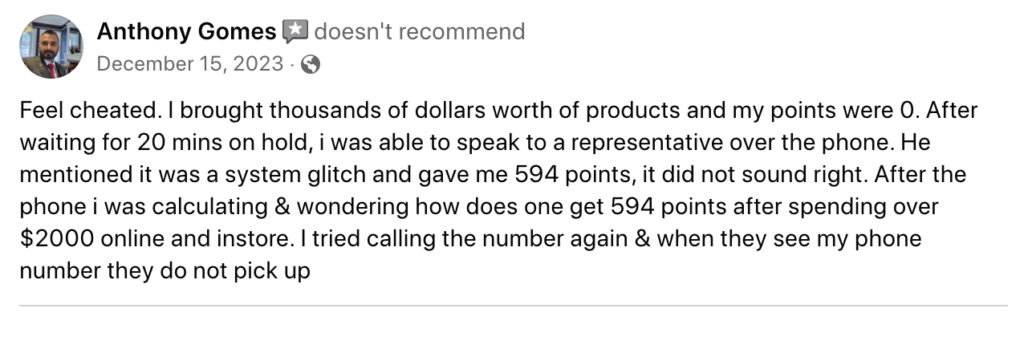
If your business has customers who spend a lot of time on social media, you need to be available to assist them through those channels. A key component of the ‘omnichannel’ customer experience is providing support through whatever platforms they feel most comfortable with.
So you may need a solution that handles more than just email. When social media messages are routed into a shared inbox, you can reply to them just as you would to emails. This creates consistency, and allows you to respond immediately without switching between different apps.
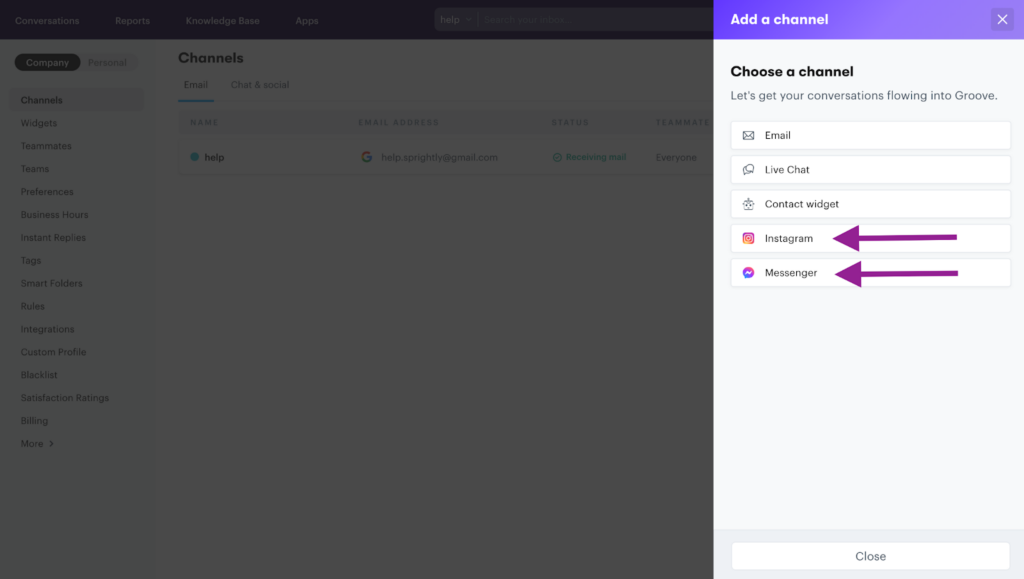
The same applies to live chat. I’m willing to bet your business has a lot of customers who expect (or at least appreciate) immediate support.
A lot of live chat tools are sold separately, focus on ‘chatbots’ instead of human agents, or don’t integrate with help desk software. Along with the usual problems of relying on too many tools, this silos customer data.
If someone reaches out through chat, and later sends an email, it’ll be harder to access all the pertinent information about that customer and their issue(s). They and your team have to start over from scratch.
So pay attention to what channels are supported by the customer service software you’re considering for your small business. Are there built-in features or easy integrations for the platforms you (and your buyers) care about? Can you route all communications into one place?
“Customer Service Has Trouble Communicating Technical Issues Directly To Our IT Department”
My biggest frustration in previous support roles was always technical support. It was really difficult to get issues resolved with our IT department. There was a lack of consistency, because nothing was tracked.
As a result, ‘minor’ bugs like coupon code errors got lost in follow-up. And when IT didn’t get back to us, we failed to help our customers.
The point is that you’ll want to think about more than just your support team. Who else do they need to communicate with? What tools do those people/departments use?
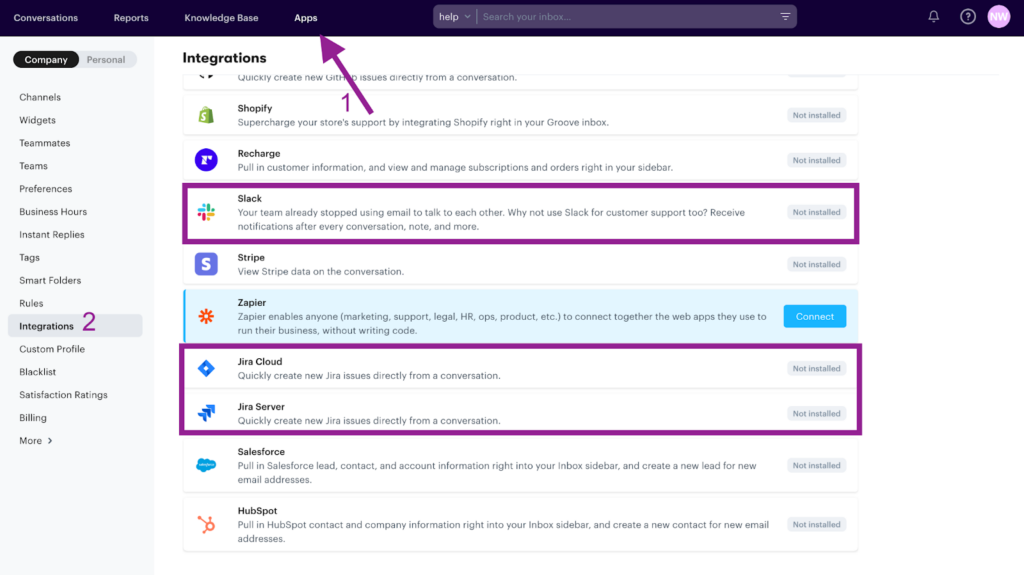
Then look for customer service software that can integrate your small business’ communication channels. Direct integration with tools like Slack and Jira saves everyone a lot of time, and helps to avoid overlooked messages and confusion over responsibilities.
“We Can’t Be Available 24/7, But Our Customers Still Need Help”
While it’s usually not a priority for retail, SaaS and similar businesses need to offer educational resources for their customers. Some products have complex use cases or a lot of features. Even if your software is easy to use, some newcomers may need tutorials and troubleshooting guides.
This is where traditional email platforms really fall short. They rarely make it easy for you to provide self-service resources. Yet those resources are a key part of customer support. They help users when you can’t, and when those users simply prefer to learn and problem-solve independently.
So it’s not uncommon for customer service software for small business to include a few self-service features. That might include functionality for creating FAQs, knowledge bases, and more.
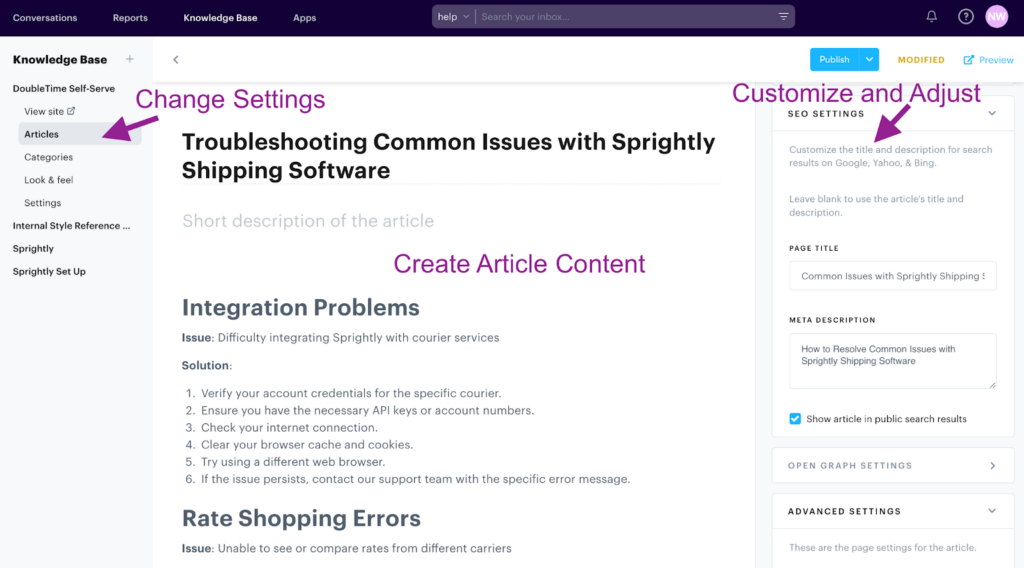
Of course, you can get those options in a separate platform. But we’ve already covered how that’s not ideal. So touch base with your customers and support team, determine what resources are needed, and see if you can find a solution that provides for that out of the box.
How To Choose Customer Service Software for Your Small Business (A Case Study)
By now, it’s hopefully clear that this isn’t a simple choice. The right platform can serve as a powerful command center for your service team. It brings all their messages and tasks together, makes their work easier, and helps them connect with buyers and other team members alike.
The wrong platform can slow them down, prevent them from working optimally, and force them into a lot of rote tasks and app switching.
So what does it look like when you align your needs with the tool you’re using?
Let’s walk through what your decision-making process might look like.
Say there’s a company called Sprightly, which wants to improve its customer support. It’s a B2B SaaS platform that offers options for small parcel and LTL shipping across various carriers.
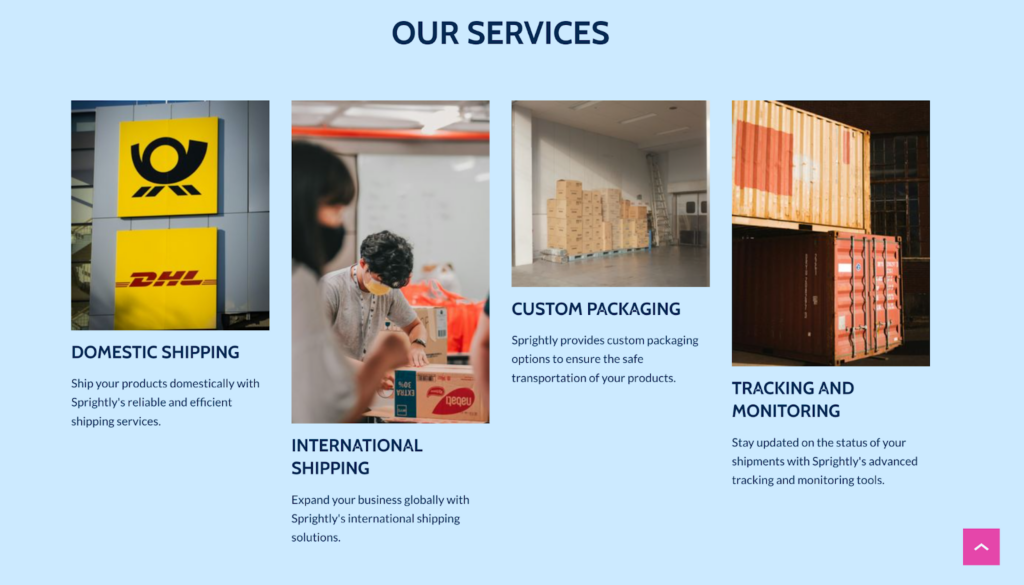
Sprightly’s cloud-based software integrates directly with popular courier services, so you can compare rates and print labels all in one place. The focus is on simplicity and ease of use, as its customers don’t want to jump across different websites (USPS, DHL, etc.) to rate shop.
Turning Broad Needs Into Specific Feature Requests
First, let’s identify this company’s needs. What does it want out of its support software?
- Sprightly is growing rapidly, and its needs aren’t being met by a simple Gmail inbox. On a daily basis, it receives upwards of ~80 emails from customers.
- The support team is not available 24/7. And even during business hours, they’re overworked and low on morale.
- It proactively markets itself through Instagram and Facebook, targeting retail clothing brands as its primary audience. This audience depends on Sprightly to run smoothly.
- Customers skew younger, and tend to be in their 20s-30s. These customers prefer short, immediate interactions through chat, email, or DM.
Once the business has identified its needs based on customer profiles, market research, and segmentation, it can create a list of desired features.
What is Sprightly looking for?
- Omnichannel support (email, live chat, socials). Since most of its customers are younger and reach out through Instagram, it needs software that can funnel DMs directly in a shared inbox.
- Automation to optimize efficiency and improve response times. Sprightly’s support team wants the ability to automatically funnel all inquiries into appropriate folders (refunds, technical problems, feature requests), and then used canned replies to quickly respond to common/simple requests.
- A customizable knowledge base. Sprightly’s platform is complex, and requires setting up integrations with various courier services. A self-service database is needed to cut down on live support for troubleshooting.
Sprightly went looking for a platform that offered all of this. They found Groove, our customer service software designed for small businesses.
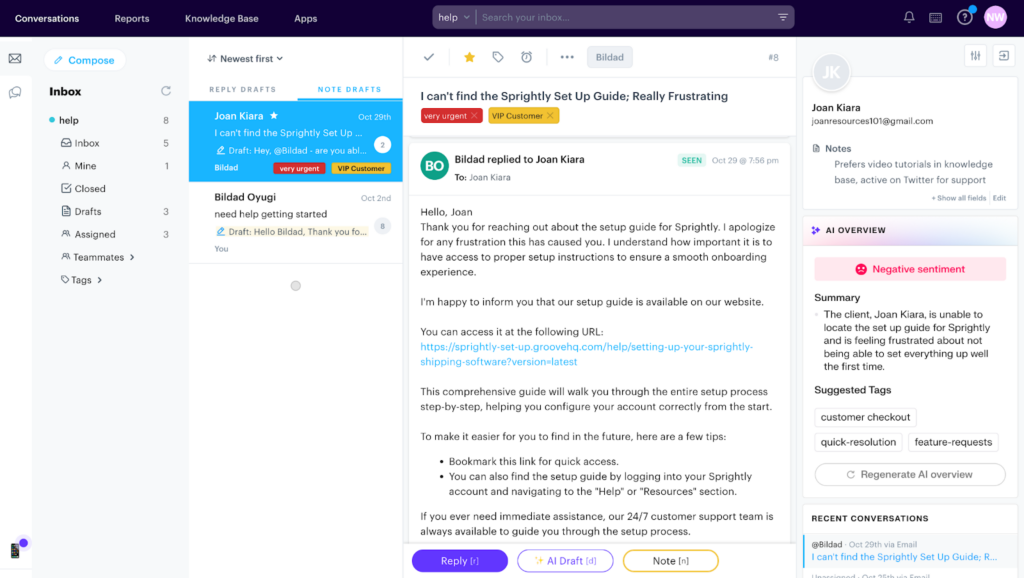
Groove seemed intriguing! It’s a help desk platform that focuses on providing a better customer support experience through streamlining, organization, and automation. Plus, it’s highly affordable, and very simple to learn.
But does it do everything they need? To find out, they check out the free trial and connect up their support channels. Let’s take a look at how Groove improves Sprightly’s customer service workflow.
Supercharging Sprightly’s Customer Support With Groove
A customer visits Sprightly’s website. They just made a purchase, are having trouble with setup, and need help ASAP.
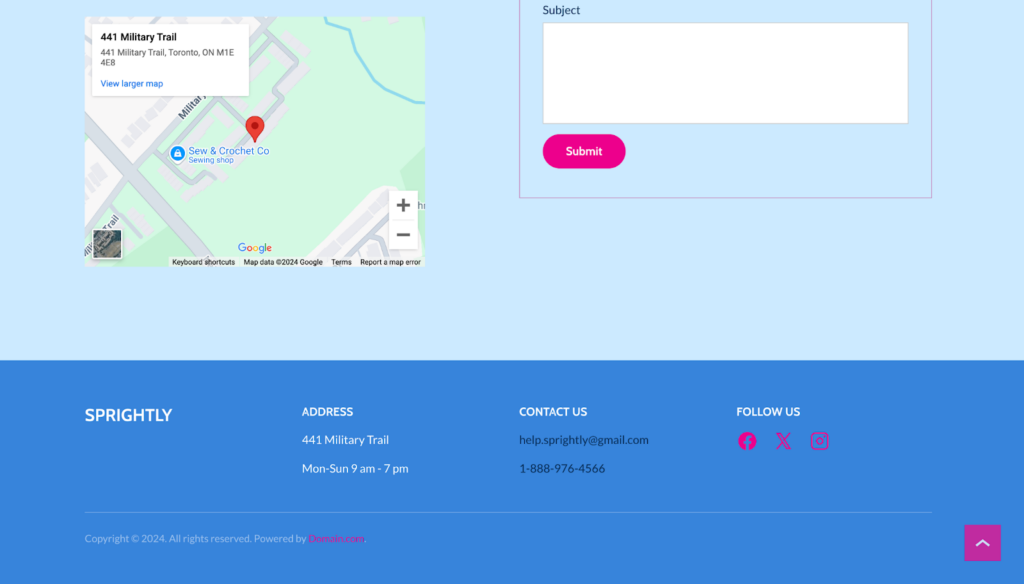
They can’t seem to find Sprightly’s support email address, so they reach out via Instagram instead. That’s not a problem, since Sprightly already connected up its Instagram account to Groove.
It will automatically receive this inquiry within the shared inbox, alongside emails and live chat notifications.
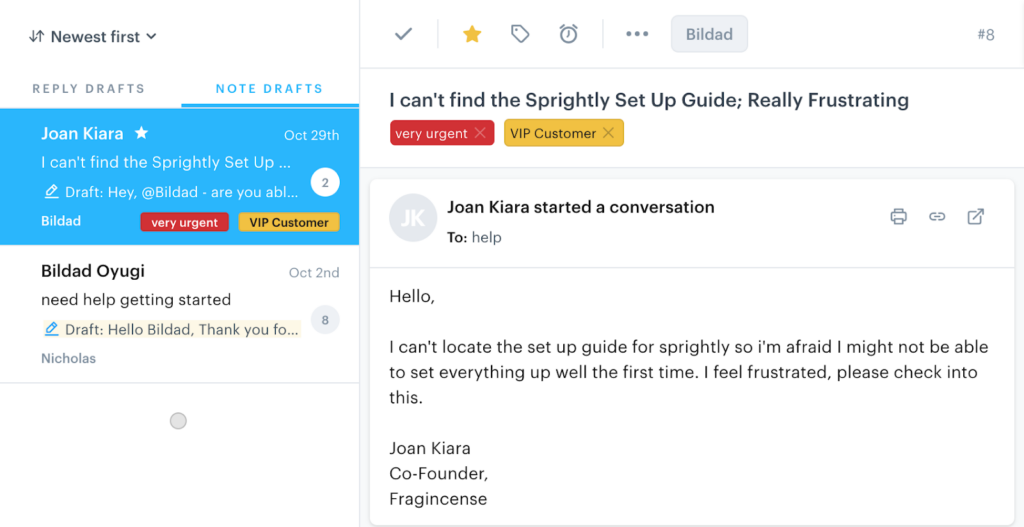
Sprightly has set up a couple of automations using Groove’s customizable rules. So Joan’s inquiry is automatically tagged as “very urgent” and “VIP customer”. It’s also sent to a specific folder for support agent Bildad to handle.
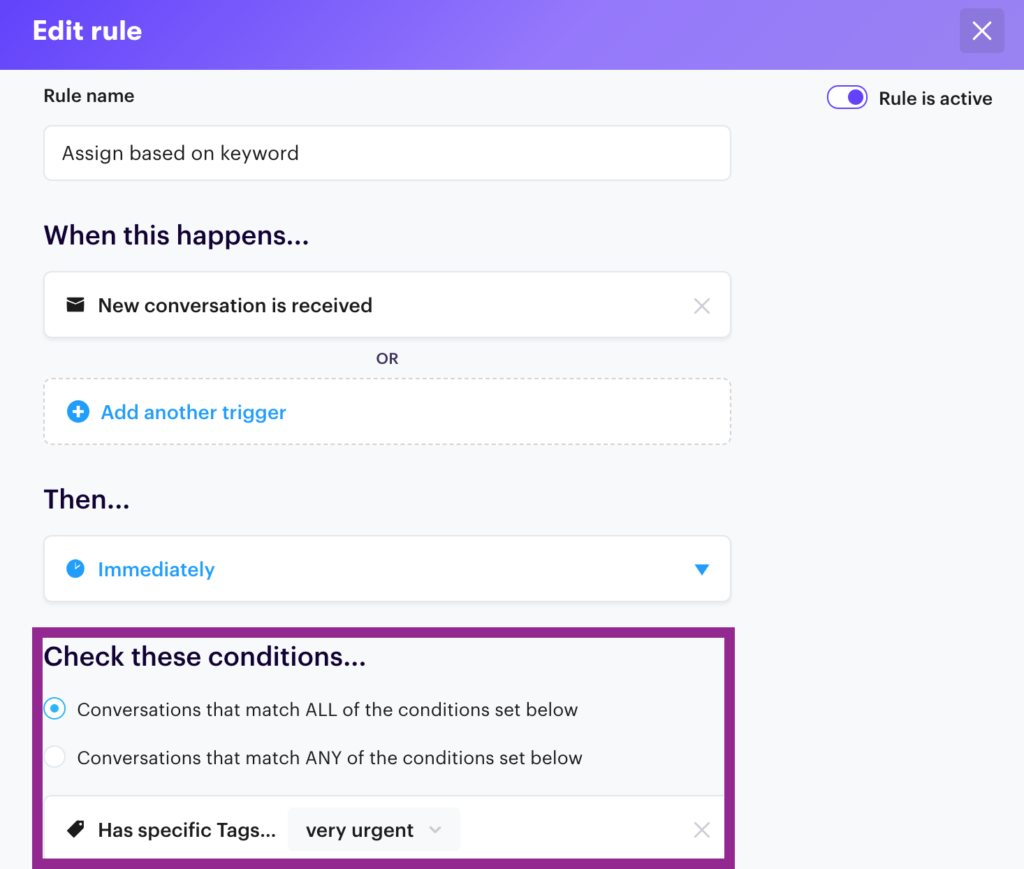
Bildad knows that Sprightly has received many similar questions lately, because their setup guide isn’t exactly easy to find. And they’re working on improving accessibility by setting up a knowledge base via Groove.
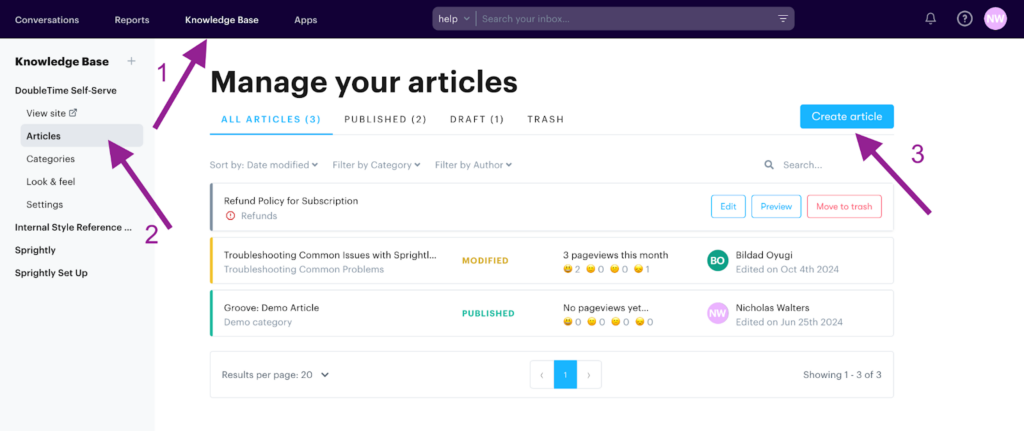
But for now, he’ll tap into the instant reply (canned response) his teammate created for this exact problem. It’s easy to access right from the response field.
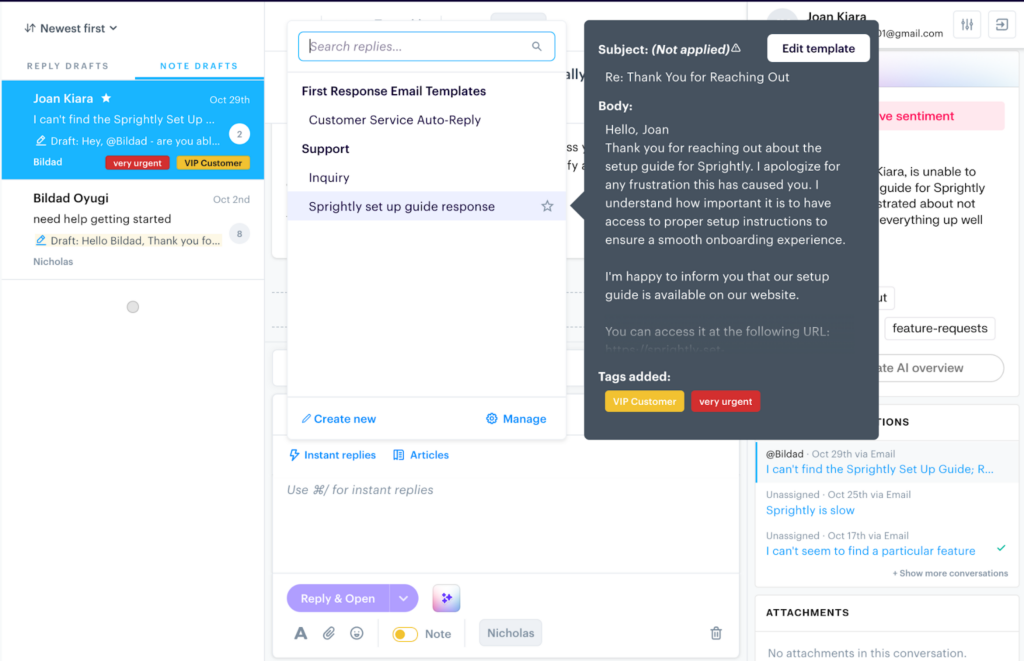
Thanks to Groove’s AI summary and AI sentiment analysis, Bildad can quickly see that the customer is pretty upset. He makes some minor edits to the canned reply to better express empathy for the situation.
He also makes a note that the customer wasn’t able to get immediate help on the website.
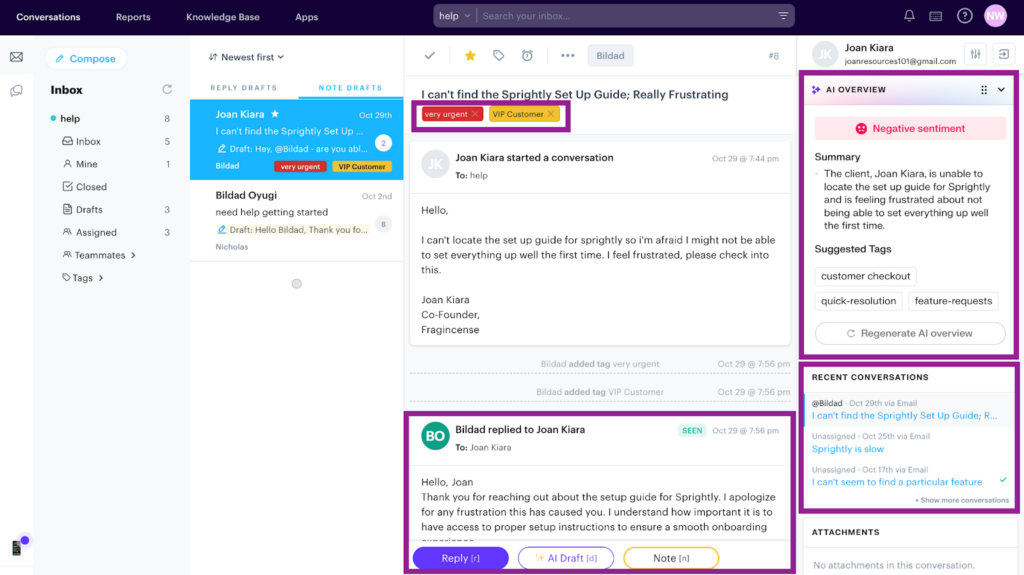
After replying to the customer and closing the ticket, Bildad begins to build a live chat widget with the rest of the support team – all without leaving Groove.
This way, customers can get help in real time, and agents still reply through Groove exactly as if they were responding to emails.
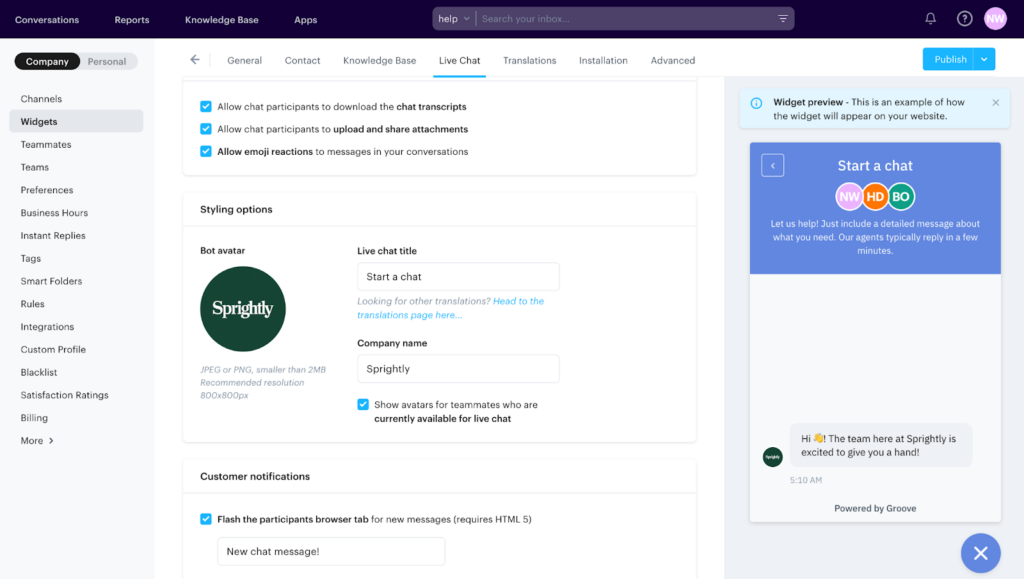
One more thing – an automatic customer satisfaction survey (CSAT) is sent to the customer once Bildad closes the ticket. It asks them to rate the service they received on a scale of 1 to 10. They can also provide written feedback that explains their score.
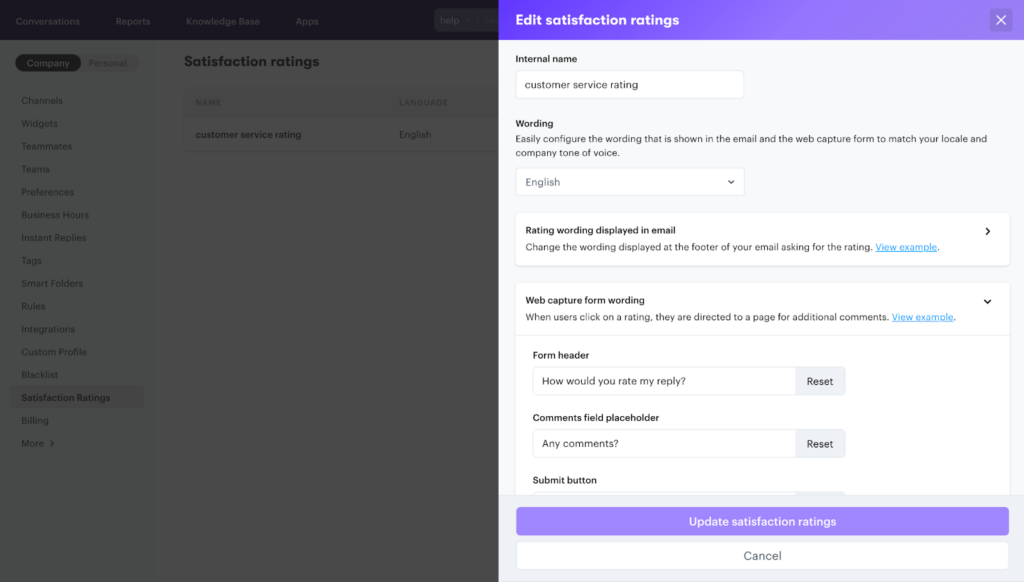
Sprightly will leverage this and other customer feedback to make future improvements. Average CSAT scores (and other important metrics) are automatically tracked right in the Groove Reports dashboard.
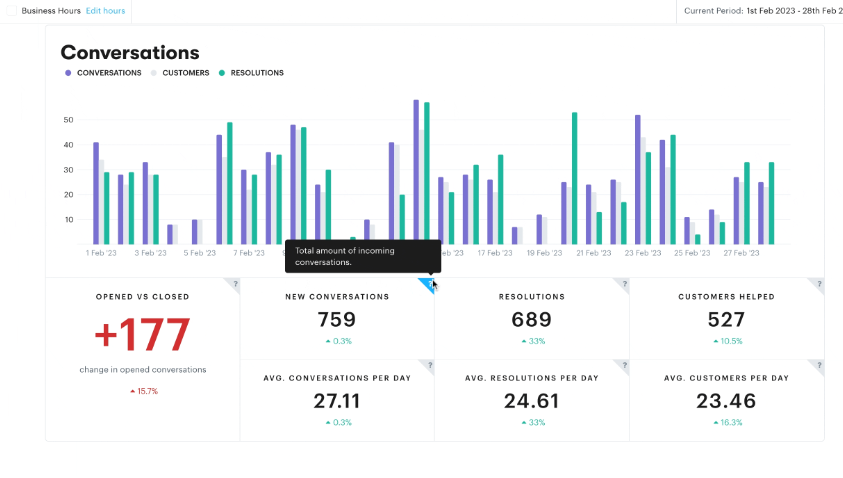
Groove allowed for more effective support, both in the short term and the long term. Sprightly is now able to manage, delegate, and organize conversations through a unified shared inbox, and collaborate on resolutions easily. All without a steep learning curve or painful dent in its budget.
Elevate Your Customer Service with Help Desk Software Built for Small Businesses
While many freelancers find standard email perfectly suitable for day-to-day support, even a small service team will find generalized tools limiting. For most businesses, a help desk is the best alternative.
If your support team wants to collaborate on replies, respond across various channels in one place, and automate repetitive tasks, there’s no better way to enable their success. Yet many popular platforms can be intimidating – too expensive, too time-consuming to learn, or both. They’re focused on reeling in those big-ticket enterprise customers.
That’s not the case with Groove. Groove is cost-effective and feature-rich. How? Because we designed it to meet the needs of small businesses, with the functionality that really matters organized in an intuitive, approachable way.
Looking for customer service software that will level up your small business support? Sign up for a free trial of Groove, and see if it’s the right fit for your team!




